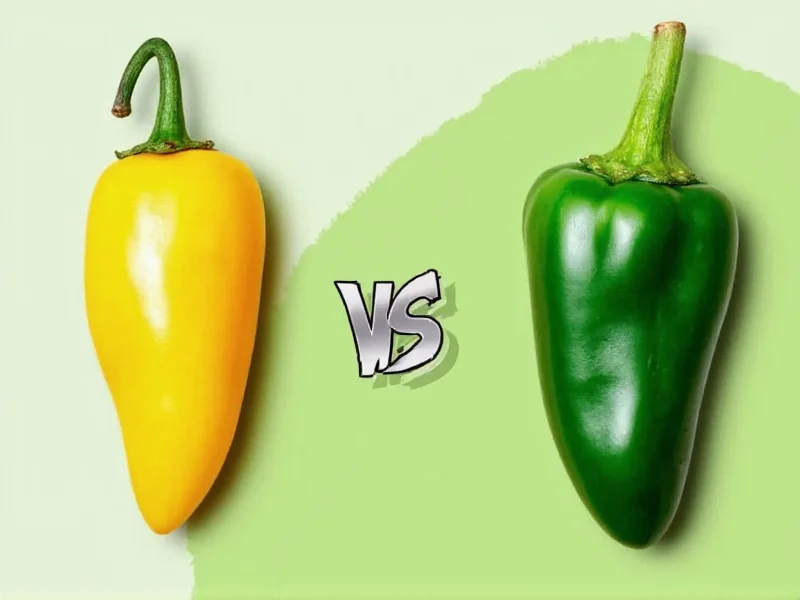When comparing which is hotter serrano or jalapeno, the answer is clear: serrano peppers deliver substantially more heat. Understanding this heat difference is crucial for home cooks, gardeners, and spice enthusiasts who want to use these popular peppers appropriately in their recipes.
Understanding Pepper Heat Measurement
Pepper heat is measured using the Scoville scale, which quantifies the concentration of capsaicinoids—the compounds responsible for that burning sensation. Developed by Wilbur Scoville in 1912, this scale remains the standard for comparing serrano vs jalapeno heat comparison and other chili peppers.
The Scoville scale works by diluting pepper extract until the heat becomes undetectable to a panel of tasters. The more dilution required, the higher the Scoville rating. Modern testing uses high-performance liquid chromatography for more precise measurements, but the Scoville Heat Unit (SHU) remains the common reference.
Serrano Pepper Profile
Serrano peppers (Capsicum annuum var. serrano) originate from the mountainous regions of Mexico's Puebla and Hidalgo states. These 1-4 inch peppers grow upright on the plant and typically range from 10,000 to 23,000 SHU.
Available in green, red, brown, orange, and yellow varieties, serranos have a bright, grassy flavor with citrus notes that intensify as they mature. Their thinner walls make them excellent for fresh salsas, hot sauces, and pickling. When comparing how much hotter is serrano than jalapeno, serranos consistently rank at least twice as hot as even the spiciest jalapeños.
Jalapeño Pepper Profile
Jalapeños (Capsicum annuum) are among the most popular chili peppers worldwide, named after Xalapa, the capital of Mexico's Veracruz state. These medium-heat peppers measure 2,500-8,000 SHU on the Scoville scale.
Typically harvested green but also available red, orange, and yellow when fully mature, jalapeños have thicker walls than serranos. This makes them ideal for stuffing, roasting, and smoking (when smoked, they become chipotles). The jalapeno pepper heat level varies significantly based on growing conditions, with stress factors like limited water increasing capsaicin production.
Direct Heat Comparison
The heat difference between these two peppers becomes clear when examining their Scoville ranges side by side:
| Pepper Type | Scoville Heat Units (SHU) | Relative Heat (Compared to Jalapeño) |
|---|---|---|
| Serrano | 10,000-23,000 | 2-9x hotter |
| Jalapeño | 2,500-8,000 | Baseline |
This serrano pepper Scoville scale rating shows why substituting serranos for jalapeños requires caution. Using equal amounts could dramatically increase a dish's heat level beyond what's intended. When making the difference between serrano and jalapeno peppers work to your advantage, consider using half the amount of serranos when substituting for jalapeños.
Practical Cooking Implications
Understanding which pepper is hotter serrano or jalapeno directly impacts recipe development and execution. The heat concentration in peppers isn't uniform—seeds and white membranes contain the highest capsaicin levels. When working with serranos, removing these parts significantly reduces heat while preserving flavor.
Chefs often use jalapeños when they want noticeable heat without overwhelming other flavors, making them perfect for nachos, poppers, and milder salsas. Serranos shine in dishes where pronounced heat is desired, such as authentic pico de gallo, spicy marinades, and certain hot sauces. The using serrano peppers instead of jalapeno substitution works best when you reduce the quantity and potentially remove seeds.
Growing Considerations
For gardeners comparing serrano vs jalapeno heat comparison, environmental factors significantly impact heat levels. Both peppers prefer warm temperatures and well-drained soil, but serranos typically mature faster (about 70 days versus 75-80 for jalapeños).
Pepper heat increases when plants experience stress—limited water, nutrient deficiencies, or temperature fluctuations. This explains why two jalapeño plants might produce peppers with noticeably different heat levels. When growing both varieties, keep in mind that serranos naturally produce more capsaicin, making them consistently hotter even under identical growing conditions.











 浙公网安备
33010002000092号
浙公网安备
33010002000092号 浙B2-20120091-4
浙B2-20120091-4